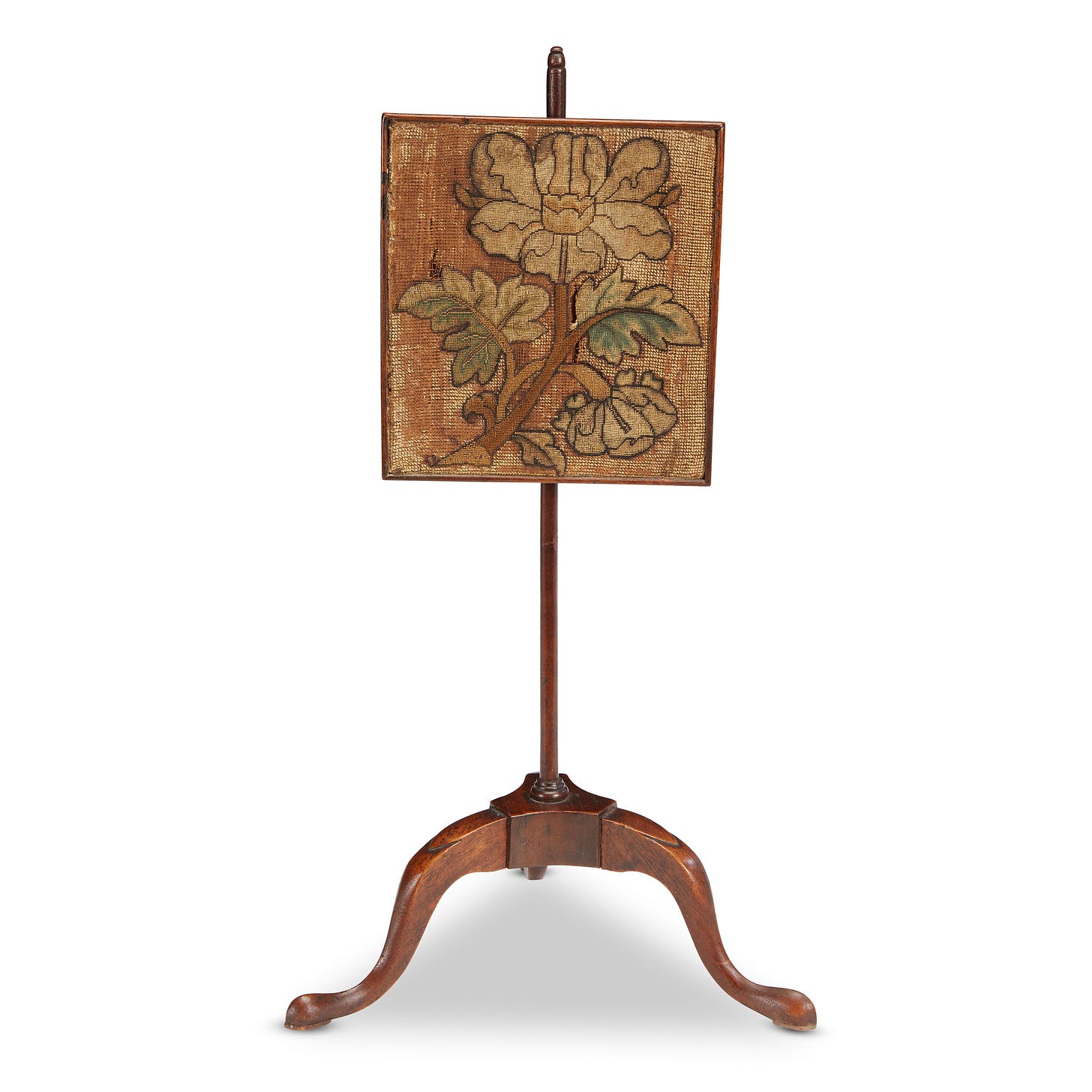#136 Design on fire 🔥
Escape chutes + melting make-up
This week’s Design Lobster is crackling with surprising design stories. From some creative approaches to fire escape to a long-forgotten staple of 18th century drawing room design.
In some personal news, I moved to New York City last week to help bring Monzo to America. Let me know what design I should be checking out here! 👀
Question: What’s the best way to escape from a fire?

There was an alarming increase in the frequency of fires in the late 19th century thanks to the arrival of explosion-prone home appliances like kitchen ranges and bathroom boilers. Victorian fashion also didn’t help. The enormous and highly flammable crinoline dresses that women were required to heave around often lead to appallingly painful deaths if they brushed too close to the hearth.
This outbreak of fires prompted a corresponding outbreak of patent applications for devices that might permit escape from a burning building. Beyond a dizzying array of ropes, pulleys and chutes more eccentric ideas were also patented, including the helmet-worn parachute above and this utterly infeasible pair of escape wings.
Ultimately, progress was made by changing how buildings themselves were designed. Through innovations like fire towers and stricter regulations around fire escape routes. The episode strikes me as an interesting example of a badly framed problem. Instead of seeing escape as something that an individual needed to be better equipped for, the more useful framing was to see ‘escape-readiness’ as a property of the building.
Design takeaway: Are you framing the problem you’re trying to solve in the right way?
🕯️ In Design Lobster #12 we looked at Dieter Ram’s exquisitely designed table lighter
Enjoying Design Lobster? Share it with a friend, colleague or fellow designer 🤲🦞
Object: Pole screen
In the 17th and 18th centuries both men and women wore waxy make-up to hide smallpox scars. This presented a particular problem on a cold winter’s night where the desire to stay warm by the fire conflicted with the wish to prevent one’s face from sliding off. This concern was also not pure vanity, smallpox make-up also frequently contained lead so warming it even a little bit made it much more toxic.
To resolve this tension, and to promote generally higher levels of comfort around the fire, pole screens such as the one above became a regular fixture in households. A wicker or embroidery screen could be lifted and fixed at any height on a long wooden pole, allowing a sitter to site close by the fire with no risk of any melting mishaps.
Over time, as smallpox diminished in prevalence owing to vaccination, smaller and more decorative screens became fashionable. Many (such as the one above) used floral designs, whilst others featured idealised pastoral scenes.
Design takeaway: Does your design help those who use it look good to others?
🔥 In Design Lobster #112 we examined an avant-garde 20th century electrical fire
Quote: “You’re only given a little spark of madness. You mustn’t lose it.”
– Robin Williams
This week’s quote comes from the late and legendary comedian and actor Robin Williams. I’m attracted to the idea that we should nurture our irrational side a little as designers. All the best ideas start off by sounding a little mad…
Have a great week,
Ben 🦞
And lastly, a design remix…

Enjoyed this week’s Design Lobster? Let me know by clicking the heart button ❤️
👇



Totally agree with the quote from Robin Williams. Especially looking at the evolution of the design practice, I feel that we've been getting further and further away from creativity, and closer and closer to engineering. I'm sure there's still a lot of creativity, but it feels that way, especially with the growing complexity of the design deliverables.
I remember seeing the escape shute before. Crazy as it might seem now, lots of people said that about early patents and design for aircraft at the beginning of that era. In fact about most things we take for granted today. I remember Philips dropping their video phone because the concept of people looking at each other on a phone call was fatally flawed. Experts said women would never answer a phone unless they had make-up on.